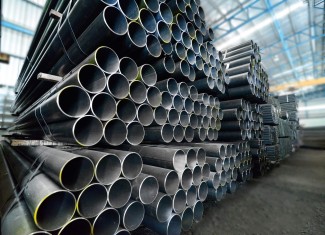Indiana has a strong industrial job base, but the state’s steel and aluminum industries are at risk of losing their competitive edge amid the clean energy transition unless they pivot to low-carbon metals, according to new research the American Council for an Energy-Efficiency Economy (ACEEE) prepared for Citizens Action Coalition (CAC) of Indiana. The report recommends strategies for Indiana to capture the low-carbon metals market now and lock in its competitive advantage.
Indiana is home to more than a quarter of U.S. steelmaking capacity and one of only five remaining U.S. aluminum smelters. Many major manufacturers have committed to significantly reducing emissions from the metals they use, but most Indiana manufacturing facilities are still powered by fossil fuels, especially coal. In addition to relying on coal, Indiana’s metals sector uses dated and emissions-intensive manufacturing processes, even though lower-carbon alternatives are available and used in other states.
General Motors, Honda, Toyota, Stellantis, and Subaru—all of which have plants in Indiana—have pledged to achieve carbon neutrality in their supply chains between 2038 and 2050, varying by manufacturer. This will require Indiana to decarbonize its facilities that make steel and aluminum (both major components of cars) or force automakers to purchase low-carbon metals made outside the state.
“The auto industry is shifting to low-carbon metals, and that’s not what Indiana produces right now. Indiana is at risk of losing jobs if automakers have to turn to other states for the steel and aluminum they need to make cars. Now is the time when policymakers have a chance to help the state’s steel and aluminum industries transition to new processes so their products remain competitive for the future,” said Anna Johnson, senior researcher in ACEEE’s industry program and lead author of the report.
Indiana’s major steelmakers use emissions-intensive blast furnaces to manufacture steel, a method that has been in use since the 1400s. A lower-carbon alternative uses natural gas to produce the heat needed for steelmaking. Though gas is a fossil fuel like coal, the process can be fully decarbonized by replacing the fossil gas with hydrogen made using renewable energy.
Competing facilities in other states are beginning to produce metals that could take increasing market share from automakers and other buyers. The report points to the new Big River Steel mill in Arkansas, which produces low-carbon steel with newer technology than Indiana uses. The plant is slated to expand its steelmaking for the auto sector. In contrast, steelmakers in Indiana continue to invest in carbon-intensive blast furnaces. Similarly, Alcoa’s aluminum smelter in Warrick, Indiana, runs on electricity generated from a coal-fired power plant.
“Steel manufacturing employs 28,000 Hoosiers, half as many as in 1990. Indiana is again at risk of losing good-paying manufacturing jobs if we fail to decarbonize our industrial facilities by powering them with renewable energy,” said Ben Inskeep, program director of Citizens Action Coalition. “The good news is that billions of dollars in federal incentives are already available to help upgrade these facilities, which would protect Hoosier jobs and our economy.”
More than $80 billion in federal funds are available over the next decade for industrial decarbonization, including $10 billion in tax credits for facilities that reduce carbon pollution by at least 20%, $6.3 billion for energy-intensive industrial facilities to reduce emissions, and $2 billion for low-carbon materials used in federally funded transportation projects.
The report recommends that Indiana invest in low-carbon metal manufacturing at the scale needed to meet the demands of major automakers and other manufacturers. Indiana could also benefit from a well-trained clean energy workforce for industrial facilities that manufacture the low-carbon goods of the future. The report recommends that Indiana policymakers collaborate with the aluminum and steel industries to develop a coordinated strategy across stakeholder groups, including utilities, regulators, organized labor, industry, and community groups.
A significant challenge to shifting Indiana’s metals sector to renewable energy is local restrictions on wind and solar generation. More than a third of Indiana counties have passed ordinances blocking future wind energy investment, and eight counties have completely prohibited wind energy generation. Restrictive siting standards for solar generation, as well as prohibitions on new commercial solar development, are also increasingly prevalent. Protecting industrial jobs in Indiana will likely require a friendlier policy environment toward wind and solar energy.




